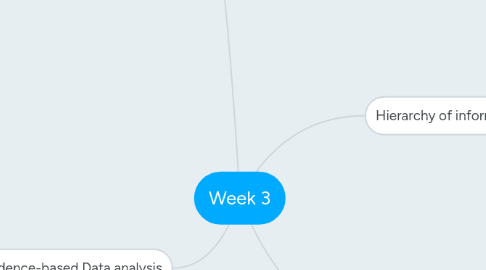
1. Reproducible research checklist
1.1. DO: Start with good science
1.1.1. good question / goal
1.1.2. garbage in, garbage out
1.1.3. good collaborators
1.1.4. something that is interesting to you
1.1.5. Good habits
1.2. DON'T: Do Things by Hand
1.2.1. Cleaning data in spreadsheets
1.2.2. Editing tables or figures
1.2.3. Downloading data from web sites manually
1.2.4. Moving data around computer
1.2.5. "we will need this only once..."
1.3. DON'T: Point and Click
1.3.1. Don't use any GUI
1.3.2. Ease of use can sometimes lead to non-reproducible analyses
1.4. DO: Teach a Computer
1.4.1. Write program, so steps would be exact
1.5. DO: Use Version Control
1.6. DO: Keep track of your software environment
1.6.1. Versions
1.6.2. OS
1.6.3. sessionInfo() function
1.7. DON'T: Save output
1.7.1. Instead save data + code
1.7.2. Intermediate files are okay as long as you have documented how they are created
1.8. DO: Set your seed
1.9. DO: Thinks about the entire pipeline
1.9.1. Raw data
1.9.2. Processed data
1.9.3. Analysis
1.9.4. Report
2. Evidence-based Data analysis
2.1. Replication
2.1.1. Focus on validity of scientific claim
2.2. Reproducability
2.2.1. Focus on validity of data analysis
2.2.2. We get
2.2.2.1. Transparency
2.2.2.2. Data availability
2.2.2.3. Sofrware / Methods availability
2.2.2.4. Improved transfer of knowledge
2.2.3. Can we trust this analysis is not addressed
2.2.4. Address problems long after they occured
2.3. Create analytic pipeline from evidence-based components
2.4. A Determenistic Statistical Machine
2.5. Analysis with a transparent box
2.6. Reduce research degree of freedom
3. Hierarchy of information
3.1. Asking info from busy people
3.2. Research paper
3.2.1. Titl
3.2.2. Author list
3.2.3. Abstracct
3.2.4. Body
3.2.5. Suplementary materilas
3.2.6. Code / Data
3.3. email presentation
3.3.1. + Links
3.3.2. + Data / Code
4. RPubs
4.1. rpubs.com
4.1.1. publishing knitr documents
4.1.2. RStudio - knitr results - Publish button
4.1.2.1. Sends resulting html file to RPubs
4.1.3. People can comment and share
4.1.4. Everything is public
